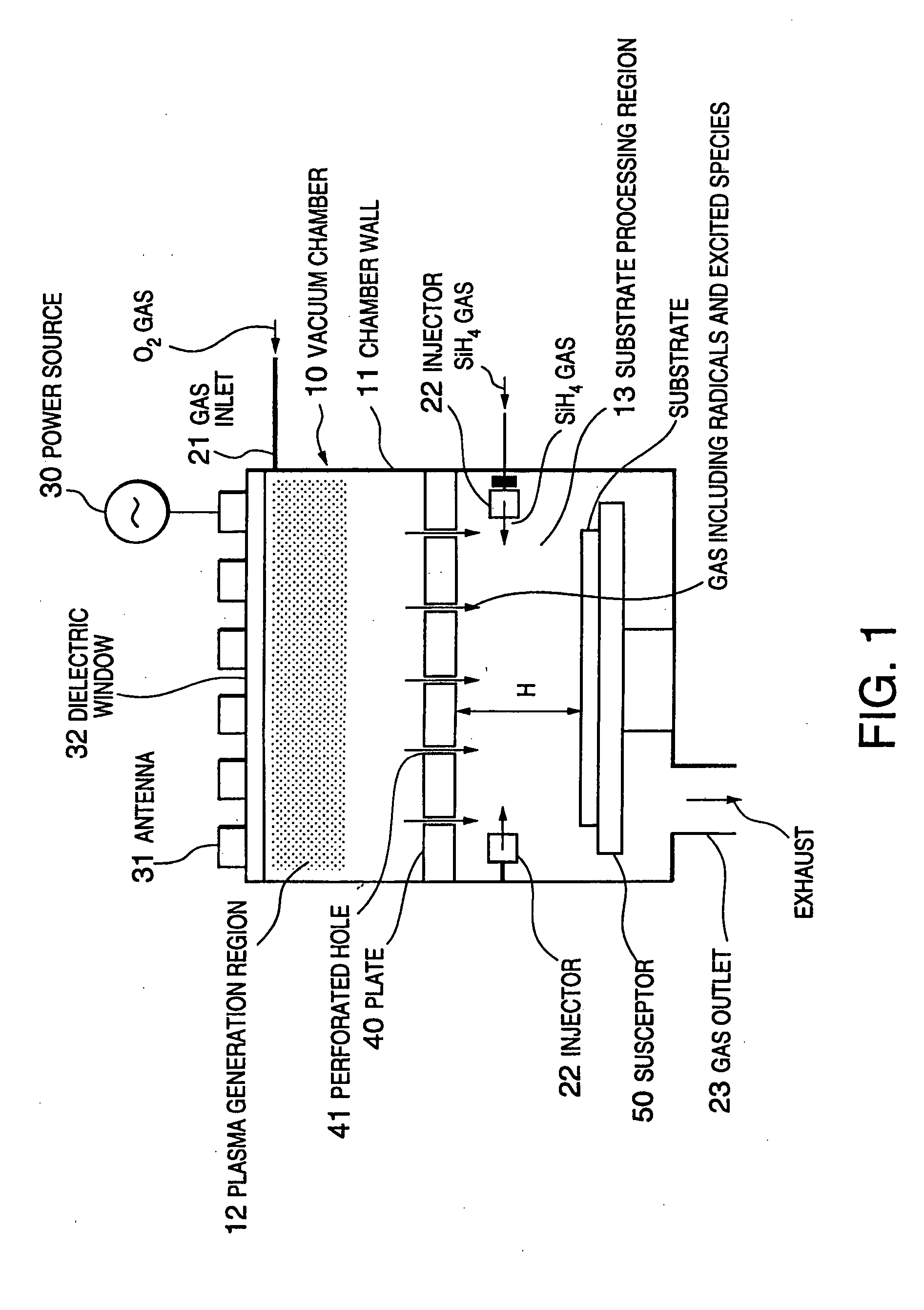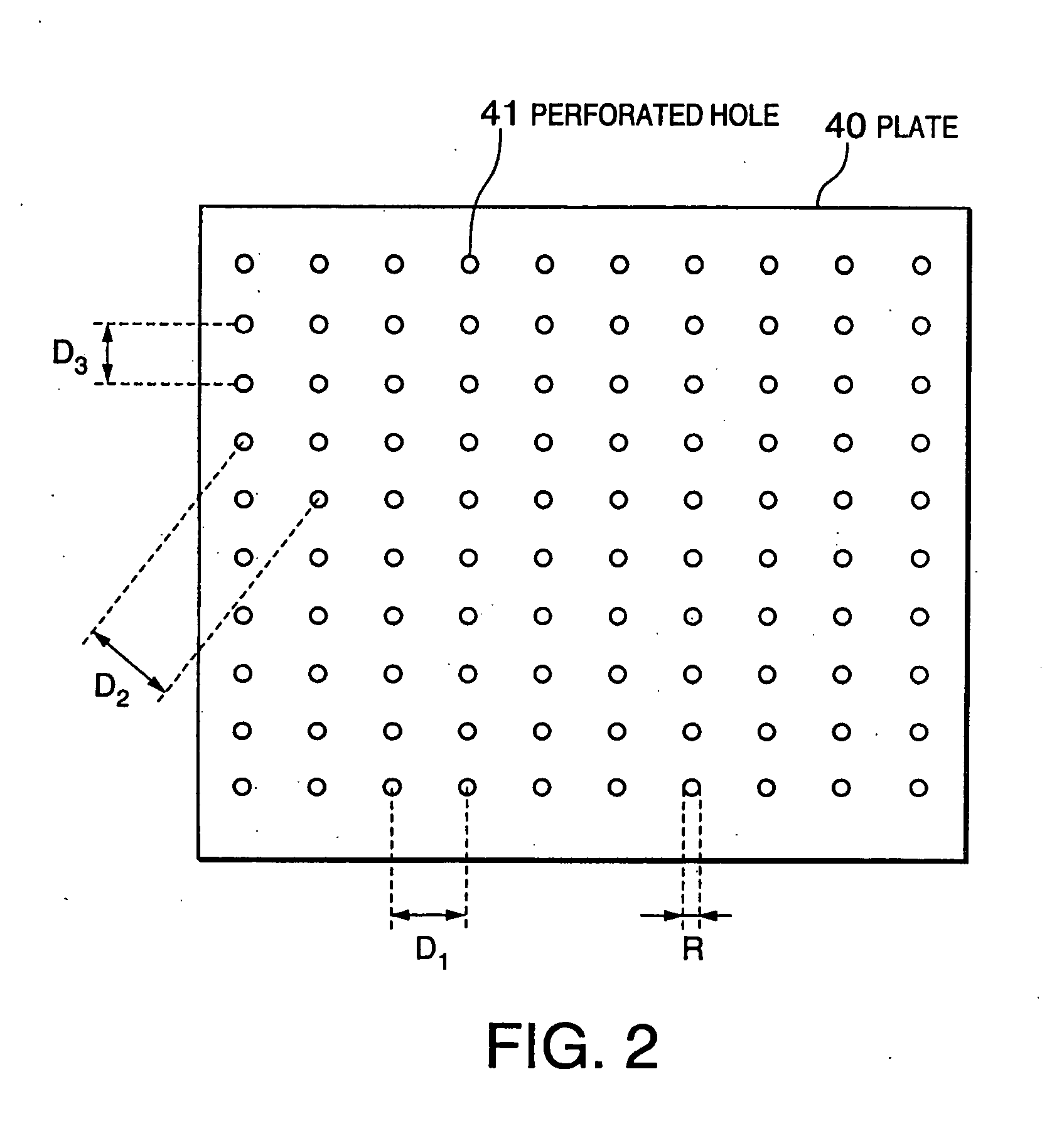Remote plasma apparatus for processing substrate with two types of gases
a plasma apparatus and substrate technology, applied in chemical vapor deposition coatings, electric discharge tubes, coatings, etc., can solve the problems of material gas, silane gas, backflow, etc., and achieve the effect of suppressing backflow
- Summary
- Abstract
- Description
- Claims
- Application Information
AI Technical Summary
Benefits of technology
Problems solved by technology
Method used
Image
Examples
Embodiment Construction
[0031] Referring to FIG. 1, a remote plasma apparatus according to an embodiment of this invention is a remote plasma CVD apparatus where oxygen gas (O2) of a plasma material gas and silane (SiH4) gas of a deposition material gas are used to deposit a silicon dioxide film on a substrate or a wafer. As mentioned above, the plasma material gas is decomposed and changed into plasma including radicals and excited species, while the deposition material gas reacts with the radicals and excited species in the gas phase reaction. To obtain a silicon dioxide film, the plasma material gas may be another oxygen-containing gas, such as a nitrous oxide gas or a nitric oxide gas, while the deposition material gas may be another silicon-containing gas, such as a disilane gas or a higher silane gas, or a liquid silicon material, such as a TEOS (tetraethoxysilane). To obtain other films, the plasma material gas and the deposition material gas may be other kinds of gases which can be selected by a sk...
PUM
| Property | Measurement | Unit |
|---|---|---|
| diameter | aaaaa | aaaaa |
| length | aaaaa | aaaaa |
| diameter | aaaaa | aaaaa |
Abstract
Description
Claims
Application Information
 Login to View More
Login to View More - R&D
- Intellectual Property
- Life Sciences
- Materials
- Tech Scout
- Unparalleled Data Quality
- Higher Quality Content
- 60% Fewer Hallucinations
Browse by: Latest US Patents, China's latest patents, Technical Efficacy Thesaurus, Application Domain, Technology Topic, Popular Technical Reports.
© 2025 PatSnap. All rights reserved.Legal|Privacy policy|Modern Slavery Act Transparency Statement|Sitemap|About US| Contact US: help@patsnap.com



